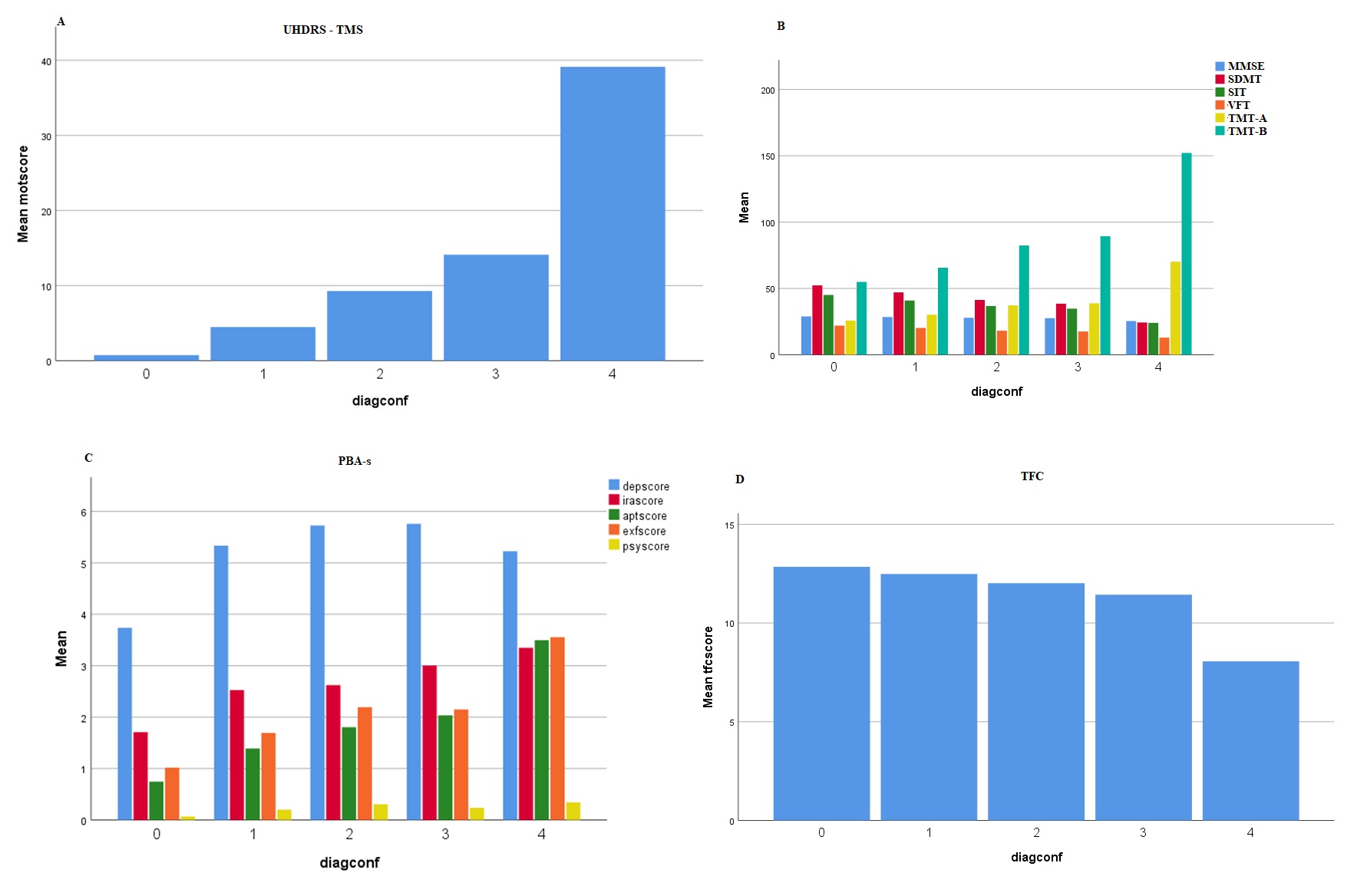Category: Huntington's Disease
Objective: To analyze HD gene carriers’ performance on cognitive and behavioral tests according to the Diagnostic Confidence Level (DCL).
Background: The diagnosis of manifest HD is based on ‘motor onset’, i.e. a DCL score of 4 on the Unified Huntington’s Disease Rating Scale (UHDRS) motor section. HD mutation carriers who do not fulfill DCL4 have historically been considered premanifest: motor nonmanifest (DCL=0,1) and prodromal (DCL=2,3). Yet, cognitive and behavioral symptoms commonly occur years before development of motor symptoms, thus the ‘manifest HD’ concept can lead to a false dichotomy between sick and healthy. We sought to demonstrate that nonmotor symptoms are relevant in different stages of HD, even in DCLs currently considered premanifest HD.
Method: A cross-sectional study of data from 16,108 Enroll-HD participants CAG>xxx (PDS5). Data from baseline visits were extracted. Scores obtained in the clinical scales were analyzed according to the DCLs: cognitive data: Mini-Mental State Examination (MMSE), Symbol Digit Modalities Test, Stroop Interference Test, Verbal Fluency Test (category animals), Trail Making Test; Behavioral assessment: Problem Behaviors Assessment–short version (PBA-s); and Motor and Functional Capacity Scales: UHDRS Total Motor Score (TMS) and Total Functional Capacity (TFC) scales. One-way ANOVA was used to assess differences in these clinical scales in regards to the DCL levels.
Results: The general characteristics and scores obtained in the clinical scales are shown in Table 1. As expected, TMS increased significantly across the DCLs. We also observed cognitive performance worsened at each DCL, with less prominent results for the MMSE scores. Regarding behavioral symptoms, depressive symptoms presented as an inverse “U” profile, with worse scores at intermediate DCL levels (2 and 3), while executive function, apathy, and notably irritability/aggression scores were significantly worse at each DCL. The psychosis subscore was similar across different DCLs. Importantly, we observed a steady decrease in TFC scores across DCLs [Figure1].
Conclusion: Consistent worsening scores in cognitive and behavioral scales (and, noteworthy, TFC) across DCLs indicates that HD gene carriers DCL<4 had major nonmotor symptoms. These nonmotor features should be considered for a clinical diagnosis of HD.
To cite this abstract in AMA style:
N. Rocha, M. Edmondson, C. Testa, J. Patino, M. Rossetti, A. Teixeira, E. Furr Stimming. Nonmotor Symptoms in Huntington disease in relation to the Diagnostic Confidence Level [abstract]. Mov Disord. 2021; 36 (suppl 1). https://www.mdsabstracts.org/abstract/nonmotor-symptoms-in-huntington-disease-in-relation-to-the-diagnostic-confidence-level/. Accessed November 29, 2025.« Back to MDS Virtual Congress 2021
MDS Abstracts - https://www.mdsabstracts.org/abstract/nonmotor-symptoms-in-huntington-disease-in-relation-to-the-diagnostic-confidence-level/

